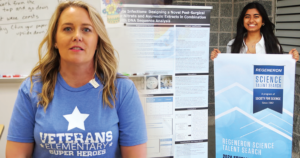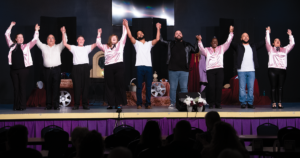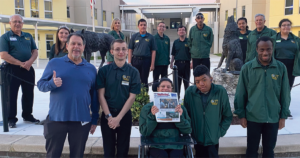
Pasco County is looking to improve its parks and recreation facilities, but just how far the county can go to pay for sweeping changes and improvements could depend upon whether or not county residents are willing to pay for the upgrades.
A series of town hall meetings will be scheduled to sell and market the county’s Parks & Recreation department’s ideas to Pasco residents, who will likely have the last say in a voter referendum sometime in the not-too-distant future.
Some of the changes and enhancements being proposed include a recreation center and pool or splash pad at Wesley Chapel District Park on Boyette Rd., adding a playground, basketball courts, walking path and picnic shelters to the park in Meadow Pointe (I and II), and new parks at Wesley Chapel Lakes (Meadow Pointe III and IV) and the Wiregrass Ranch area.
County planner Justyna Buszewski presented a draft of the proposed 10-year Park & Recreations system master plan at Board of County Commissioners (BCC) chair (and District 3 commissioner) Kathyrn Starkey’s town hall in Lutz on Feb. 18.
Money is still a big issue, as Pasco’s parks are still recovering from the recession of 2008.
Three community centers, two parks and two pools were closed as a result, and 48 positions were eliminated. Staff reductions led to reduced maintenance, and some projects in the 2001 master plan were never completed.
Buszewski said that the deferred maintenance costs alone are $14 milllion.
The current draft shows that the county is interested in spending more than $200 million to repair and replace existing parks, put new facilities in existing parks, build new parks and perhaps adopt a premier park model, which would include things like splash pad playgrounds, shade structures for playgrounds and access to special-value facilities supported by the parks system, like wakeboard parks, aquatics complexes and even equestrian centers.
Some funding options mentioned by Pasco’s executive planner, Matt Armstrong, include a municipal service taxing unit (MSTU), with a focus on taxing “market areas” where the monies raised in each zone can only be used on parks in that zone. Other potential creative taxes, grants and partnerships with local businesses, schools and neighborhoods also are being considered, Armstrong said.
“The message we got (from county commissioners) was guys, go back out to community and tell them what the plan is,’’ Armstrong said. “Show pictures, show the way it is and show how it could be and tell them how much it will cost and ask them what they want to do about it.”
In a recent survey sent to 3,000 county residents, an impressive 621 respondents (more than 20 percent!) replied.
They were asked if they were given $100 to spend on park improvements, what would they use the money on? On average, the respondents said $20 should go to improved maintenance, $19 for improved maintenance on water-based facilities, $15 on acquiring new park land or open space, $12 on the improvement and maintenance to existing trails, $11 on the development of new trails, $9 on the improvement and maintenance to wildlife areas and campgrounds and $8 to the development of new sports facilities.
Also, when asked about establishing a dedicated funding source that could only be used to pay to operate and maintain parks and recreation facilities and programs, 45 percent of respondents were very supportive, and 25 percent were somewhat supportive.
Only 10 percent said they would not support spending the money.
“The survey says that they want stuff, and hopefully we get the same support when we go out there,’’ Buszewski said.




No comment yet, add your voice below!